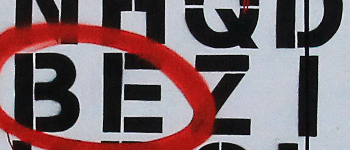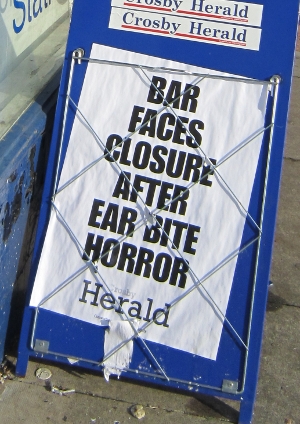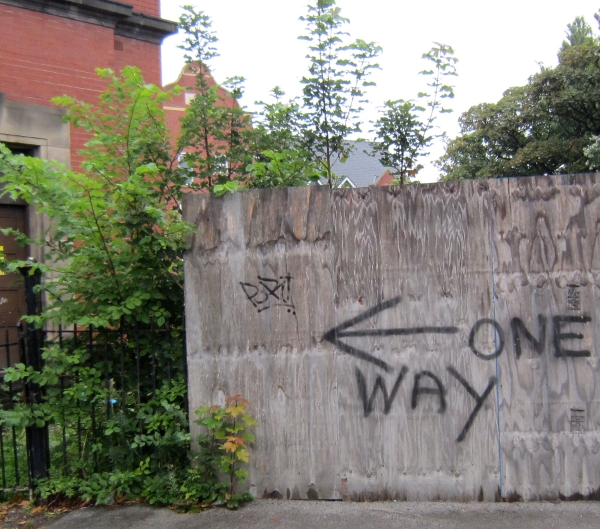
We tend to think of plot and story as interchangeable terms. When you describe a plot, after all, aren’t you actually describing the story? Well, yes, but that doesn’t make plot and story the same. A story is a series of causally linked events – one thing leads naturally to another (a facet that Aristotle thought was pretty crucial). The plot, on the other hand, is the way that we experience this underlying story – or, from the writer’s perspective, the way that we present it.
A quick example: Hamlet
Claudius is jealous of of his brother’s status as king and lusts after the King’s wife, Gertrude. So he kills the King and marries Gertrude. The hasty marriage upsets the old King’s son, Hamlet. But when his father’s ghost appears to fill him in on the murder, Hamlet is pitched into indecisive turmoil. And so on. That’s our story.
The plot, though, begins later than the story with a quick burst of exposition and the appearance of the old King’s ghost. Much of the story of Hamlet happens off stage. Hamlet pops over to England, gives the hapless Rosencrantz and Guildernstern the slip before returning to find poor Yorick’s skull. Ophelia kills herself in the lake.

Fortinbras invades Denmark. All of this is central to the story, but it enters the plot only as exposition. It’s important, because it drives the story, but it isn’t present to the action.
A story is the world, a plot is the path you take
You could never really tell the whole of a story. There is, after all, an infinite implied backstory to any set of events and an infinite amount of detail available in a single second of a story’s time. A plot might cover an epoch – David Mitchell’s Cloud Atlas spans hundreds of years. A plot might cover an instant – Nicholson Baker’s The Mezzanine unfolds in a single lunch hour. A telling must start somewhere. The teller of a tale must choose what to include. Plot is the scope of that telling.
The scenic route
If you’re a fan of the Russian Formalists (in particular Vladidmir Propp and Victor Shklovsky) then you may have seen this distinction rendered as fabula (story) versus syuzhet (plot). To Shklovsky, syuzhet was a defamiliarisation of fabula. What does that mean? Very broadly, it means that plot renders story strange – or to put it more boringly – it makes it interesting. A plot is charged with mystery. It hides as well as reveals, like a ghost train it takes you on the scenic route.
Think about a murder mystery. The killing may already have happened before we accompany the detective on his or her investigation – we must sift the clues, follow the false trails in order to arrive at what, in story terms, was already a done deal at the start.
So if plots are cunning, what tricks can they get up to? Here are a few.
Time
As we have seen, in describing the difference between story and plot, story is often represented as a landscape and plot as a route mapped through that terrain. At the risk of undermining myself, I don’t always find that image especially useful because plot is much more flexible in both time and space than a route on a map could ever be.
So the story of Pulp Fiction begins with enforcers Vincent and Jules discussing continental hamburger joints (the famous Royale with Cheese scene) on their way to conduct a hit. It ends with Butch and Fabienne riding off into the sunset on a stolen motorbike. The plot, on the other hand, slides about the timeline, beginning and ending in more or less the same time and place – a stick up at a diner.
As Wikipedia describes, the relationship between story, plot and time in the movie Memento is a particularly tortured one:
Memento is presented as two different sequences of scenes interspersed during the film: a series in black-and-white that is shown chronologically, and a series of color sequences shown in reverse order (simulating for the audience the mental state of the protagonist). The two sequences meet at the end of the film, producing one complete and cohesive narrative
This diagram of story versus plot in the movie hammers the point home.

Dr Steve Aprahamian CC BY-SA
These examples are, perhaps, extreme – but many books and films make use of flashbacks and parallel timelines.
Even in a relatively straightforward narrative, the plot dilates and contracts time. We leap forward through days or weeks then slow down to focus in close detail on the passage of minutes or seconds. Events not present to the current time influence shown actions.
Seeing
If a plot manages the when of narrative, it must (almost always) also select the who. Most narrators hover close to one or two point of view characters. So despite the vast scale of events in The Lord of the Rings, for example, we see them from a hobbit’s perspective. The same (a closely related) story could be shown through the eyes of a king or a wizard to different effect. In fact, a Russian novel, The Last Ringbearer, presents some of the story of Lord of the Rings from the perspective of Orcs. This plot leads us to a very different experience of the story.
It is worth admitting a complexity here. In most narratives the forces of cause and effect that make up story are related in a fundamental way to the characters who frame the plot, since these characters actively determine the story. Plots which show passive characters are often harshly judged by readers and critics. This means that switching characters would also switch aspects of story. In other words, if we leap into Aragorn’s perspective, the narrative would likely tell a different story, not just provide a distinct plot for the same story.
Nonetheless, the viewpoint a narrative settles upon and the way that character sees contributes to a plot which is distinct from the underlying story. Frodo and his companions notice the world like hobbits and not like rangers or elves.
Telling and showing
We have seen how a plot selects and shows events from the terrain of the story. It can jump around in time. It can focus perception through the eyes of characters. A narrative can also baldly choose what to to include and what to exclude. The murder omitted from the beginning of the mystery, the essential detail held back at a key moment. Any narrative that includes a reveal has, by definition, held back story information. Famous examples of this include movies like The Sixth Sense and Psycho. On a more subtle basis, though, the story reveal forms a key part of most plots. In some senses, the mission of plot is to reveal the truth of story.
Aristotle called the character’s discovery of this truth recognition. Not only does this realisation provide a revelatory pay off, it can also transform the meaning of the plot up to that point. Aristotle’s archetype for the instance of recognition is Oedipus Rex. When the king discovers that the old man he murdered was his father, that the queen he married is his mother, he (and we) must reassess every hubristic decision he made throughout the play.
Mindful plotting
Of course, just by writing fiction, you illustrate the distinction between story and plot. You will select a character. You will select what gets shown and what gets skipped, you will likely use flashbacks, or refer to backstory through exposition. Plot always stands apart from story.
But by tracking the ways that these two aspects of narrative diverge you can exert more control over your fiction. You can think, for example, about the way that plot can be used to hide the causality in story. As an author you know that A causes B which causes C in your story. By hiding that relationship initially and only revealing it at the right dramatic moment you manage the influence you exert on your reader.
You might also think about the way that you use time, how and where you compress it, where you focus – how those choices affect the pacing of your work?
You can also consider point of view. Experiment with the effect of different perspectives. If your narrative allows you to inhabit the viewpoint of more than one character in a story or scene, how do these shifts change the reader’s perception of story?
Getting practical
Read Lorrie Moore’s short story How to Talk to Your Mother (Notes). Notice how it flows backwards in time. Notice also how it compresses time. Compare the flow of plot – the telling of the story, with the timeline you discover as you read. Experiment with stories that use similar techniques.
Tom Stoppard’s play Rosencrantz and Guildernstern are Dead takes the story of Hamlet and plays it out from the point of view the hapless courtiers of the title. Read the play. Is it really the story of Hamlet? To what extent has the story been changed by the shift in point of view? What is the effect of the change in plot? Try a similar exercise with a famous story.
Build a story timeline with a causal chain. Create a plot in which the events in the story chain are misinterpreted by the characters.
Photo by Oliver Schwendener on Unsplash




